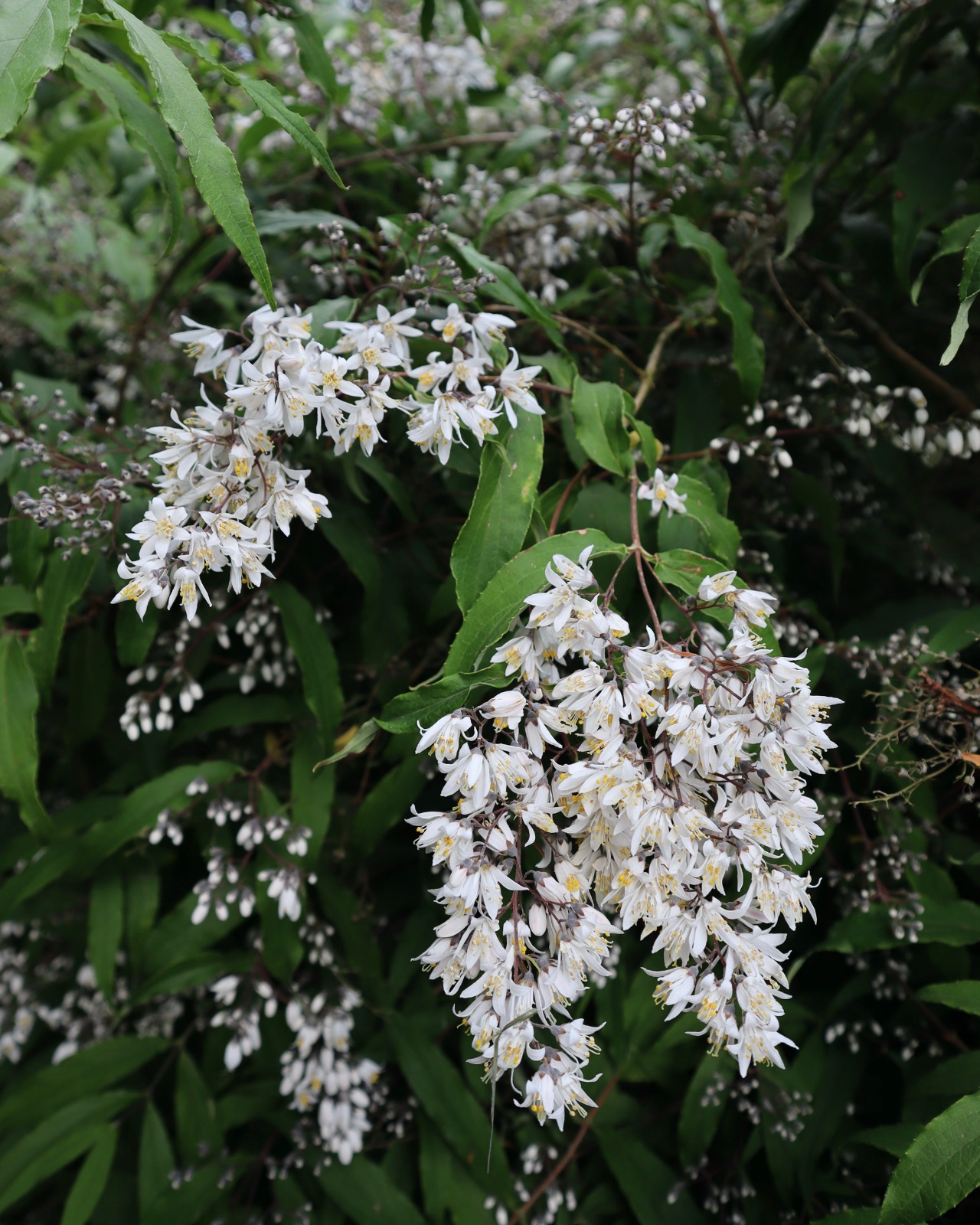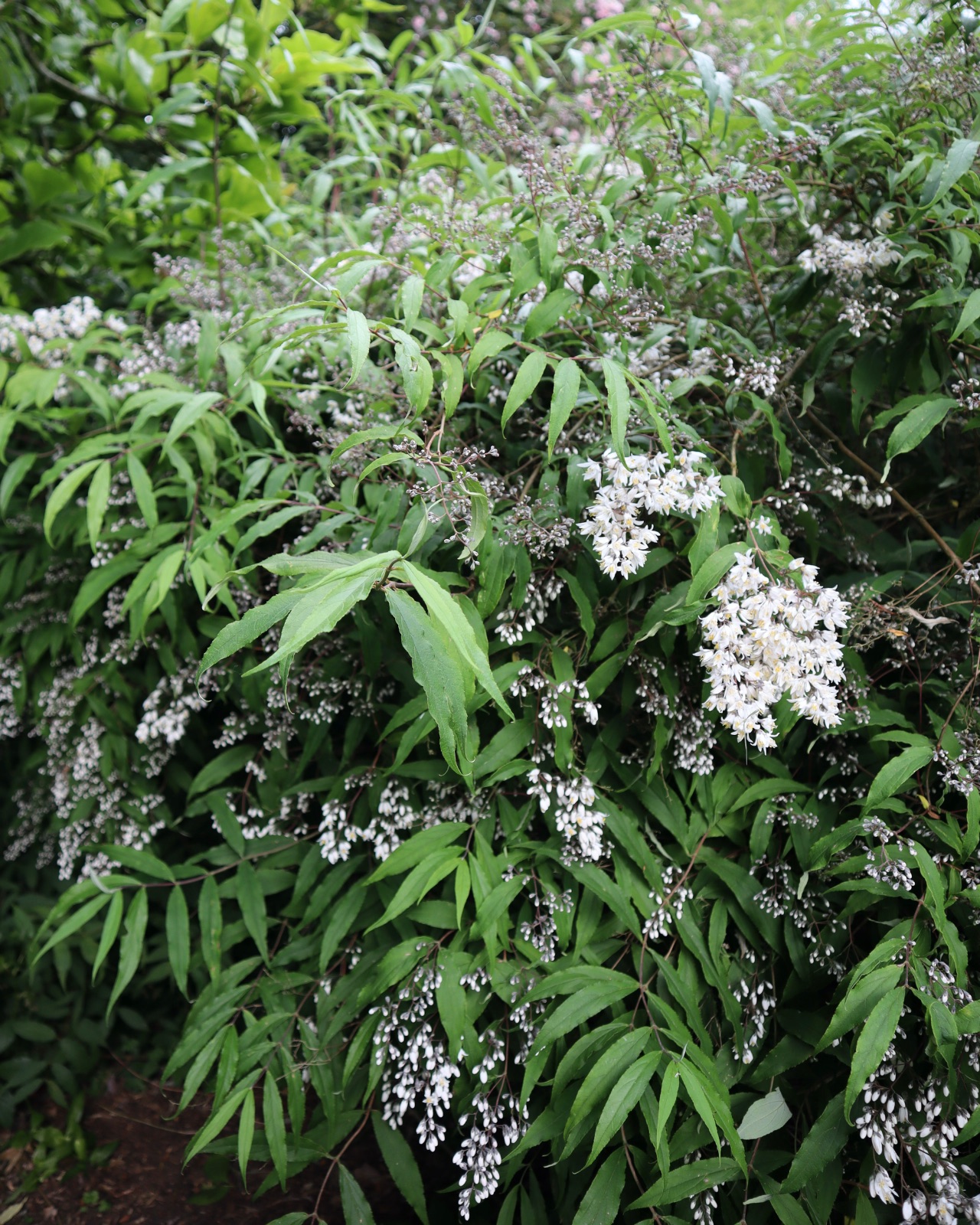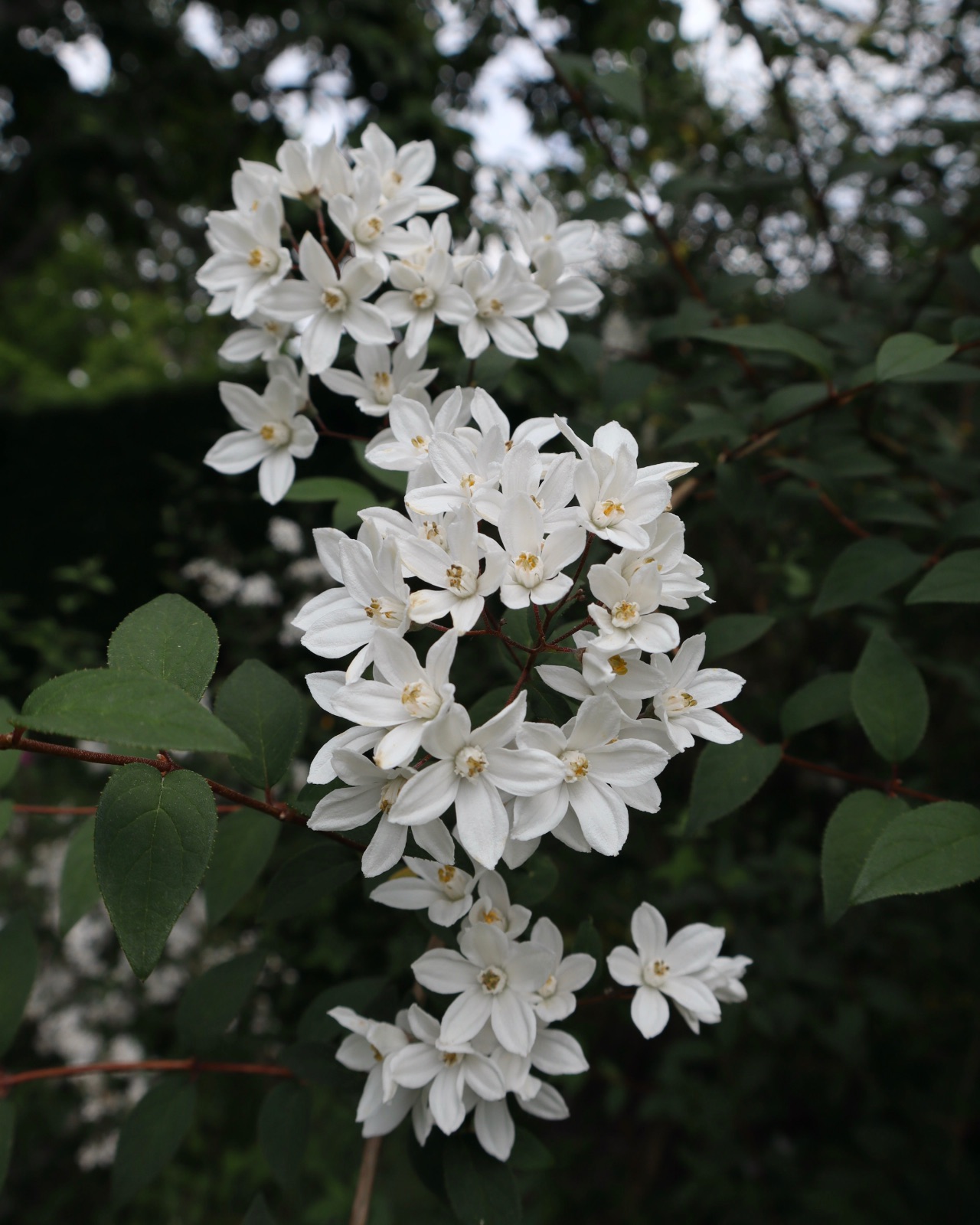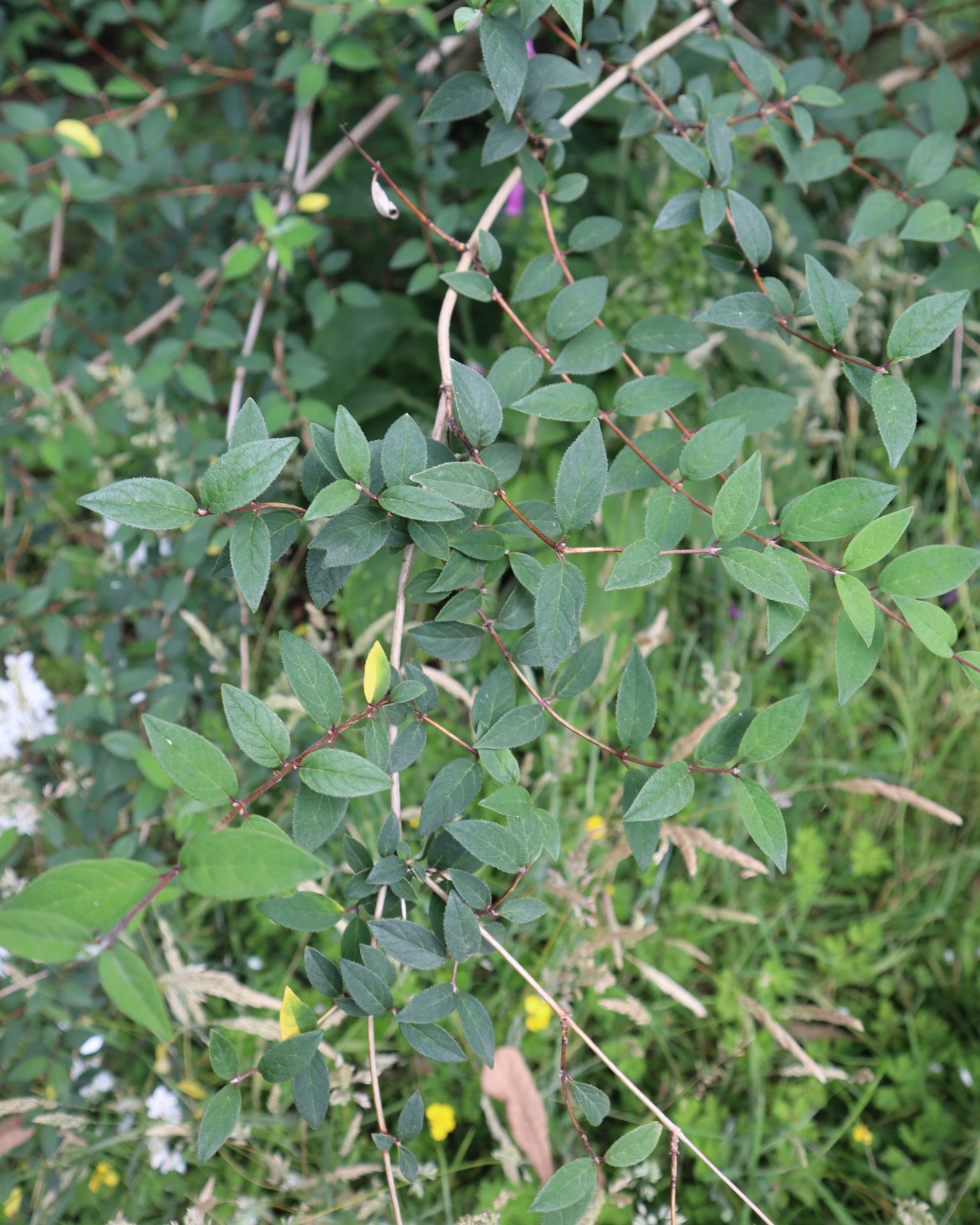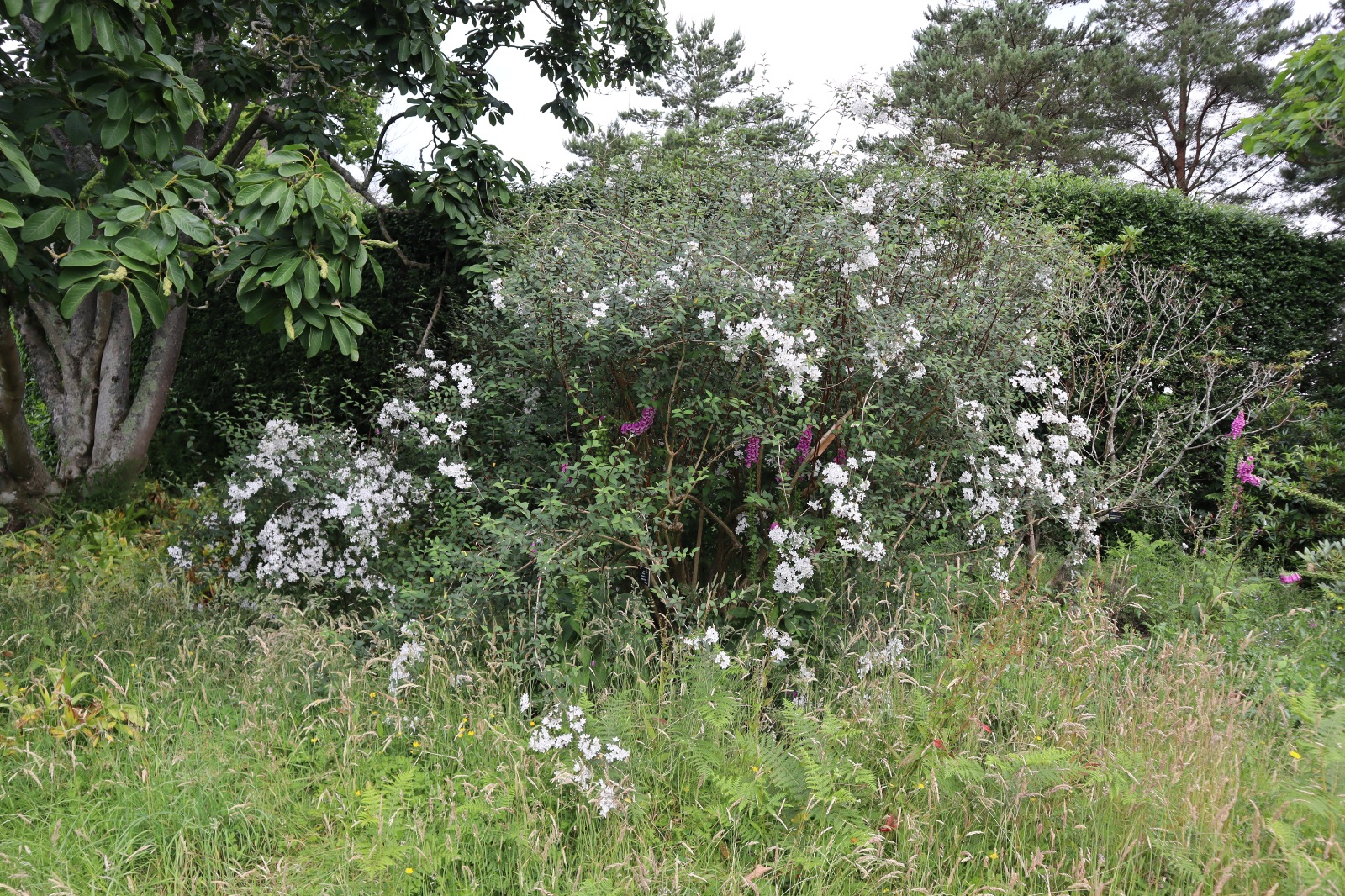Deutzia schneiderana
Credits
Article from Bean's Trees and Shrubs Hardy in the British Isles
Recommended citation
'Deutzia schneiderana' from the website Trees and Shrubs Online (treesandshrubsonline.
Genus
Infraspecifics
Other taxa in genus
- Deutzia amurensis
- Deutzia compacta
- Deutzia corymbosa
- Deutzia discolor
- Deutzia × elegantissima
- Deutzia glomeruliflora
- Deutzia gracilis
- Deutzia grandiflora
- Deutzia × hybrida
- Deutzia × lemoinei
- Deutzia longifolia
- Deutzia × magnifica
- Deutzia maximowicziana
- Deutzia mollis
- Deutzia monbeigii
- Deutzia pulchra
- Deutzia purpurascens
- Deutzia reflexa
- Deutzia rehderana
- Deutzia × rosea
- Deutzia rubens
- Deutzia scabra
- Deutzia setchuenensis
- Deutzia sieboldiana
- Deutzia staminea
- Deutzia taiwanensis
- Deutzia vilmoriniae
- Deutzia wilsonii
A deciduous shrub 6 to 8 ft high, the quite young shoots sprinkled with tiny starry down, soon glabrous, the bark becoming brown, afterwards peeling. Leaves ovate to lanceolate, slender-pointed, rounded to wedge-shaped at the base, minutely but sharply toothed; 11⁄2 to 4 in. long, 1⁄2 to 11⁄4 in. wide; upper surface sprinkled with five- or six-rayed hairs, the lower surface greyish white with many-rayed hairs and with simple hairs near the midrib and chief veins; stalk 1⁄6 to 1⁄4 in. long. Inflorescence a panicle 11⁄2 to 21⁄2 in. long, opening in June. Flowers white, 3⁄4 in. wide, the petals narrowly oblong, rounded at the end, covered with stellate down outside; calyx bell-shaped at the base, 1⁄6 in. long, grey with stellate down, the five lobes triangular; stamens notched at the top where the anthers are attached; styles usually three.
Native of W. Hupeh, China; discovered by Henry, introduced in 1907. This is nearly akin to D. scabra, which differs in being much more thinly starry downy beneath the leaf and in having none of the simple hairs near the chief veins such as occur in this species. The inflorescence of D. schneiderana is not so cylindrical and the petals are also narrower and smaller.
From the Supplement (Vol. V)
D. chunii – This species is included by Zaikonnikova in D. ningpoensis.
D chunii Hu
A near ally of the preceding, differing in its narrower, willow-like leaves, {1/2} to f in. wide, only sparsely stellate-hairy above. The flowers are smaller ({1/2} in. wide) but borne with great freedom in numerous panicles up to 3 in. long. This is a beautiful species, with graceful foliage, flowering in July when most deutzias are over or past their best. It was introduced from E. China in 1935.
D ningpoensis Rehd
This is allied to the two preceding species, from which it may be distinguished by the broader, ovate-oblong leaves with remotely dentate or entire margins and by the longer panicles (to almost 5 in. long). It was described in 1911 from a specimen collected by Faber in Chekiang.
var. laxiflora Rehd
A variety with laxer panicles and rather narrower leaves. A beautiful deutzia at Nymans in Sussex is near to D. schneiderana and received an Award of Merit when shown under that name on 5 July 1938.

